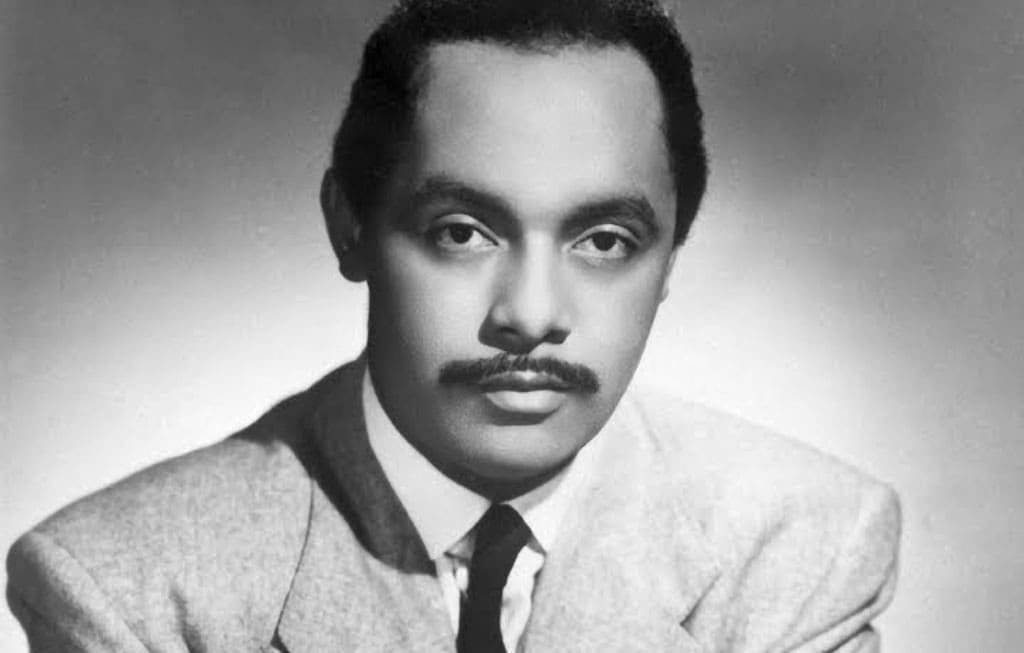
Dámaso Pérez Prado (December 11, 1916 – September 14, 1989) was a Cuban bandleader, pianist, composer, and arranger who played a pivotal role in popularizing the mambo and transforming Latin dance music in the 1950s. Affectionately known as the “King of Mambo,” his innovative arrangements and dynamic performances brought Cuban rhythms to the global stage, leaving an indelible mark on the music world.
Early Life and Musical Foundations
Born in Matanzas, Cuba, Pérez Prado was the son of Sara Prado, a schoolteacher, and Pablo Pérez, a journalist at El Heraldo de Cuba. His musical journey began early; he studied classical piano under Rafael Somavilla and later expanded his repertoire to include organ and piano in local clubs. His early exposure to diverse musical styles laid the foundation for his future innovations in Latin music.
In the 1940s, Pérez Prado worked as a pianist and arranger for several prominent Cuban orchestras, including the Sonora Matancera and Casino de la Playa. These experiences honed his skills and deepened his understanding of Cuban dance music, particularly the danzón, which would later influence his mambo compositions.
The Birth of the Mambo
While the mambo rhythm had its origins in Cuba, it was Pérez Prado who elevated it to international acclaim. In 1948, he relocated to Mexico City, where he formed his orchestra and signed a recording contract with RCA Victor. His big band adaptations of the mambo, characterized by fiery brass riffs and strong saxophone counterpoints, captivated audiences worldwide. Notable compositions such as “Mambo No. 5” and “Que Rico el Mambo” became synonymous with the mambo craze of the 1950s.
Rise to International Stardom
Pérez Prado’s influence extended beyond the recording studio. In 1955, he achieved significant success with his mambo rendition of Louiguy’s “Cherry Pink (and Apple Blossom White),” topping the charts in both the United States and the United Kingdom. This track became emblematic of the mambo’s global reach and solidified his status as a leading figure in Latin music.
Throughout the 1950s, Pérez Prado continued to release a series of hit singles and albums, including “Guaglione” and “Patricia.” His music featured prominently in films, notably Federico Fellini’s La Dolce Vita, where “Patricia” was used in the soundtrack, further cementing his international presence.
Musical Style and Innovations
Pérez Prado’s musical style was marked by his ability to blend traditional Cuban rhythms with the grandeur of American big band arrangements. His compositions often featured brass-heavy instrumentation, syncopated rhythms, and dynamic orchestrations that energized dance floors. He was also known for his distinctive vocalizations, often shouting “¡Dilo!” (Say it!) during performances, adding a unique flair to his music.
Beyond the mambo, Pérez Prado experimented with various musical forms, including bolero-mambo, guaracha-mambo, and instrumental pieces like mambo batiri and mambo kaen. These innovations showcased his versatility and willingness to push the boundaries of Latin music.
Legacy and Influence
Although Pérez Prado did not invent the mambo rhythm, his arrangements and performances were instrumental in popularizing it worldwide. His influence can be seen in the evolution of Latin dance music, particularly the development of salsa in the 1970s. Artists such as Benny Moré, who worked with Pérez Prado, carried forward his legacy, infusing their music with the mambo’s vibrant energy.
In recognition of his contributions to music, Pérez Prado was awarded Mexican nationality in 1980. He continued to perform and record music until his passing in Mexico City on September 14, 1989, from a stroke. His son, Pérez Prado Jr., has since directed the Pérez Prado Orchestra in Mexico City, preserving his father’s musical heritage.
Notable Works and Discography
- “Mambo No. 5” (1949): An instrumental piece that became a global hit and was later sampled by German singer Lou Bega in 1999.
- “Que Rico el Mambo” (1947): A track that ignited the mambo craze in Mexico and Latin America.
- “Patricia” (1958): A romantic mambo that gained international popularity and was featured in La Dolce Vita.
- “Mambo No. 8” (1954): Another instrumental hit that showcased his innovative arrangements.
Pérez Prado’s discography includes numerous albums and singles, many of which remain influential in the Latin music genre.
Personal Life
In 1949, Pérez Prado married Margarita García, a Mexican dancer. The couple had one son, José Luis Pérez Prado, who later became involved in the music industry. Pérez Prado’s personal life remained relatively private, but his professional collaborations and musical innovations speak volumes about his dedication to his craft.
Conclusion
Dámaso Pérez Prado’s contributions to Latin music, particularly the mambo, have left an enduring legacy. His innovative arrangements, dynamic performances, and ability to bridge cultural musical traditions have solidified his place as a pioneer in the world of Latin dance music. As the “King of Mambo,” his influence continues to inspire musicians and dancers around the globe.





